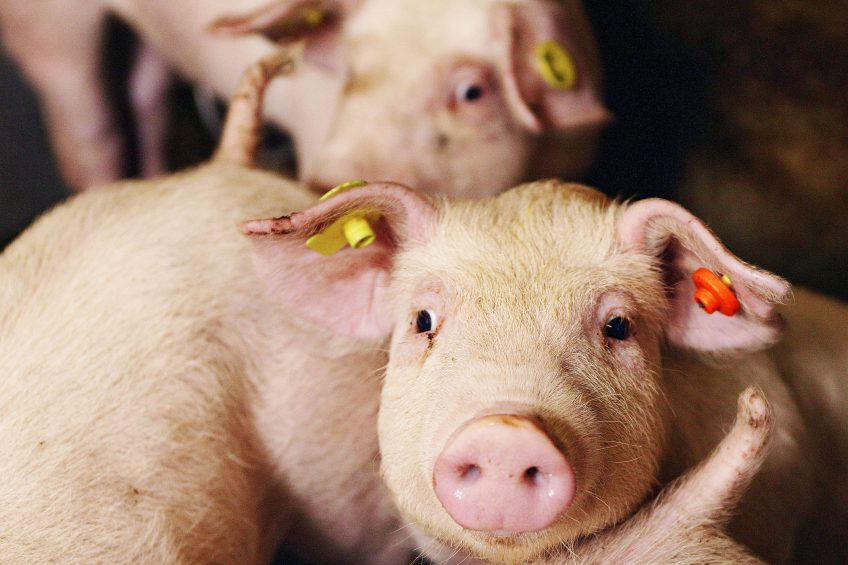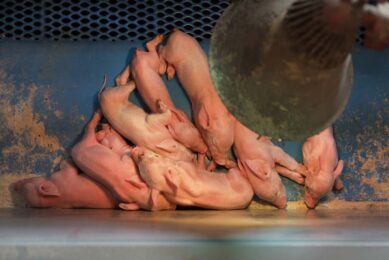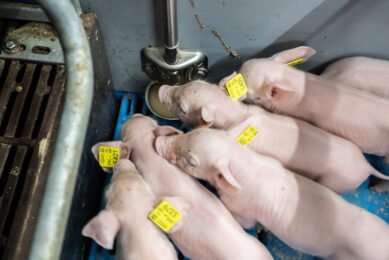Effect of free medium chain fatty acids post-weaning piglets

It is well known in swine husbandry that the weaning period is the most critical period in a piglet’s life. The environmental, nutritional, social and managerial changes that are happening during the weaning period are a real challenge for the piglets.
The short-term consequences of facing all these stress factors will be a retarded feed intake and growth, which in the end can lead to diarrhoea and immunity suppression. A lot of farms are using antibiotics to solve those problems but with the general awareness that antibiotic use must go down, alternatives are a necessity.
MCFA’s – An alternative to antibiotics
A specific synergistic mixture of medium chain fatty acids is a proven alternative. The antibacterial activity of the medium chain fatty acids and their positive effects on the gut health are already described in several studies.
In order to prove that medium chain fatty acids are a worthy alternative, a large amount of trial data is needed. Those trial data have been summarised in a meta-data analysis to show the consistent effect of medium chain fatty acids on technical performance and health in weaned piglets.
Global field trials
Field trials, involving 5244 piglets of different genetics, have been carried out in different countries (Belgium, Spain, Germany, France, the Netherlands, England and Australia). All trials started at day 1 after weaning until the piglets had an end weight of 20-25 kg. Half of the piglets in the trials were given a diet containing 2 kg/ton of Aromabiotic, a specific mixture of MCFA; the other half of the piglets can be divided into negative and positive control groups.
In trials against a negative control group, the MCFAs were just added on top of the regular diet. In trials against a positive control group, the MCFAs replaced antibiotics, zinc oxide, probiotics or organic acids. The main parameters measured in the trials were average daily gain (ADG), feed conversion ratio (FCR) and mortality. The meta-data analysis for ADG contains 18 trials, including nine negative and 9 positive trials. For FCR and mortality respectively, 15 (7 negative and 8 positive control groups) and 10 trials (6 negative and 4 positive control trials) were taken into account.
Performance improvements found
The meta-data results are compiled in Table 1. The control group consists of animals from both the negative and positive trials. Overall, with MCFA, the daily gain was significantly improved from 352 to 370 g/day, an increase of 5.2%. Significant differences were also found for the average feed conversion ratio and mortality. The average feed conversion ratio improved from 1.54 to 1.49 kg/kg (-3.5%) and the mortality was lowered 1.6%. With these better technical results, it was calculated that the total return of investment was 3.8.
Effect of Aromabiotic on ADG
Figure 1 aligns the 18 trials where ADG was measured. Trials 1 to 9 are trials with MCFA against a negative control group. Trials 10 to 18 are trials against a positive control group. The MCFA group showed an average improvement of 25 g/day compared with the negative control group and an improvement of 11 g/day compared with the positive control group. In 16 out of the 18 trials, MCFA resulted in a better ADG.
Effect of Aromabiotic on FCR
Figure 2 shows the effect of MCFA on the feed conversion ratio against negative and positive trials. The first 9 trials are negative control trials. Trials 9 to 15 are positive control trials. Against the negative control, an average improvement was measured of 0.04 kg/kg. Compared with the positive control groups, an improvement of 0.06 kg/kg was performed. In 11 out of the 15 trials, an improvement was noted with MCFA.
Effect of Aromabiotic on mortality
Figure 3 shows the effect of MCFA on the mortality of the piglets. Trials 1 to 6 are negative control trials. Trials 7 to 10 are positive control trials. A reduction of respectively 1.8% and 1.3% was measured for the negative and positive control groups. In 8 out of the 10 trials there was a reduced mortality.
Right nutritional support to meet genetic potential
With strongly increasing insights in genetic selection, today’s sows, piglets and fatteners possess an enormous genetic potential which cannot be kept up by standard nutrition. On top of this, the reduced use of antibiotics creates the need for reliable alternatives.
It is clear that the broad spectrum activity and mode of actions of medium chain fatty acids make them an ideal solution to reduce antibiotic use. Not only can they reduce the antibiotic use, they even have add-on effects when used together with antibiotics. In this way they can reduce the duration of the antibiotic treatment, and gradually reduce the antibiotic use in time.
Join 18,000+ subscribers
Subscribe to our newsletter to stay updated about all the need-to-know content in the pigsector, three times a week. Beheer
Beheer










 WP Admin
WP Admin  Bewerk bericht
Bewerk bericht